In search of Passive EQ #1
Feb 26, 2024, 10:36:00 AM
First, why do I use passive or any other EQ with fixed frequencies in the first place? It limits my habit of overthinking things. Sometimes I have a rough idea what I want to do, and I know I can achieve that quickly by using something, that has a preset path of how it works, that I am familiar with.
There are two things I look for when I decide to use a passive EQ: what curves it simulates and how well it does the "pultec trick". Today, I take a look at Coffee The Pun by Acoustica Audio.
In the analog world, the thing about passive eq's is the use of non-powered components in their circuits and then relying on an amplifier at the output. In the digital domain, it's all about the curves, as there are obviously no physical components in the code. I have to mention that as there may be people reading this wondering, what's the deal with passive EQs as software in general.
So, I have been using Coffee (haha) for a few months and I can say that I feel pretty comfortable using it for mastering, in a case I want to touch up the higher midrange and above, as well as spicing up the low end. By "comfortable" I mean I don't feel like I am overdoing it unless I really crank it, which should be the characteristic of a true passive EQ, so I think the plugin does well at what it's supposed to do.
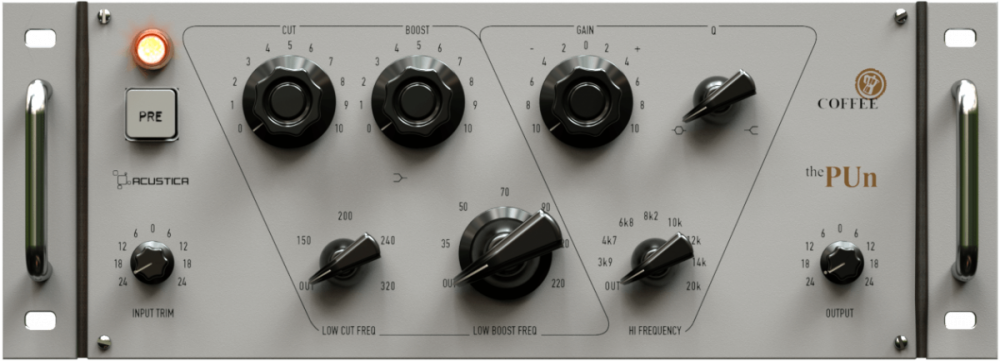
Before moving on, it needs to be said, that only the bass part of Coffee is passive. The second band is Germanium based transistor emulation so... coloring/characteristic sound, yes. That begs the question of how the plugin handles a foldback distortion/aliasing.
With pre-amp switched off, the plugin is absolutely clean and there is nothing below the root note at any point. Now, with the pre-amp engaged, it's potentiometer at default 18, and bands cranked up a lot I can spot some aliasing at very high sine sweep, but it's still below -60 dB, so it's considered inaudible and safe to use on the master bus. The picture shows one bump below 20 kHz.
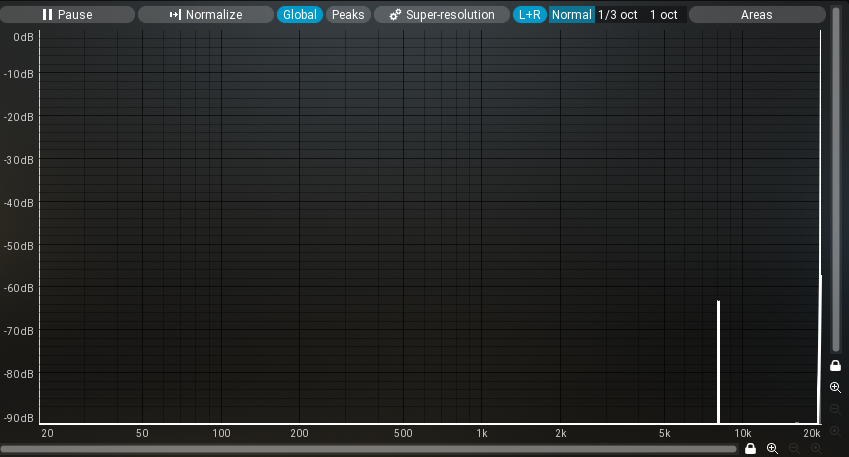
When absolutely smashed by turning up the input gain, a lot of harmonics are introduced into the signal, and the foldback is much worse, and starts to be a problem at 1 kHz and above as seen on the picture. However, that is not practical and honestly not intended, and this extreme case just shows plugin's non-linearity with preamp switched on. That means that this is one of the cases, where gain staging is important. In any case, in my eyes, the plugin passes with flying colors on the aliasing test.
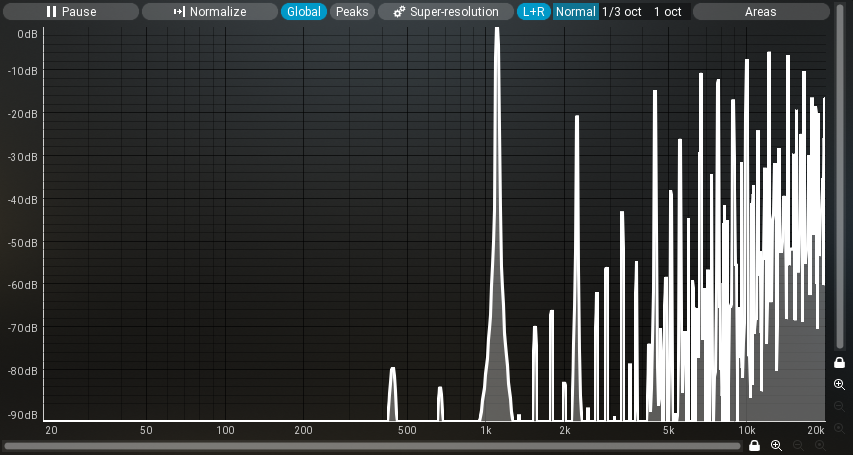
The Pultec trick is something I am on the fence about here. It's not as straight forward as it seems. The cut frequencies are different from the ones I see on other plugins of this type. From what I understand, they correlate with the actual scoop I get when I use other emulations.
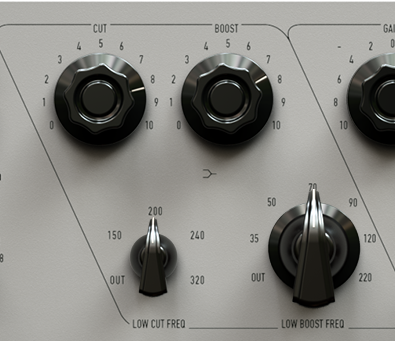
I checked that with iZotope's Vintage Equalizer and it confirms what I am saying. When I cut and boost on 60Hz, I get a dip at 300-600 Hz, that clears boxiness, and Coffee has a cut in roughly that area. If I boost and cut at 20 Hz in iZotope's plugin, I see a dip at 100-120 Hz and Coffee has a rough area for a cut too, so it's safe to presume, that the pultec trick is totally possible here... ANYWAY, I feel like I have to tweak around a lot more to get that typical sound out of it. Presonus' emulation gets me the result I look for by just tickling the boost/cut potentiometer a bit. On the other hand, I get more space to maneuver with Coffee and I feel like the sound is a bit more round and less thin.
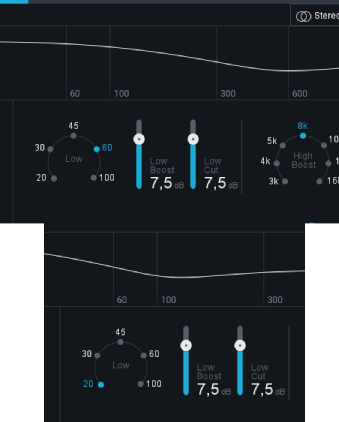
It all comes down to what is required in certain situation and no plugin is a jack of all trades, but regardless, I feel confident in using Coffee for all sorts of applications, including mastering. Just bear in mind, that it's 1GB big. Acoustica Audio uses their "proprietary sampling technology"... whatever that means, but from what I understand, they capture all sorts of data from hardware behavior in all possible situations, and then somehow compile it and make use of that data in their plugins to emulate the hardware as faithfully as possible? Perhaps...
All in all, I like what Coffee does to the sound when I use it. The most usual case of using it for me is on a kick and bass BUS, or master BUS, usually to clear low-end box sound and get a clear boost on highs.
Coffee the Pun was tested at a 48 kHz sample rate in 32bit.
